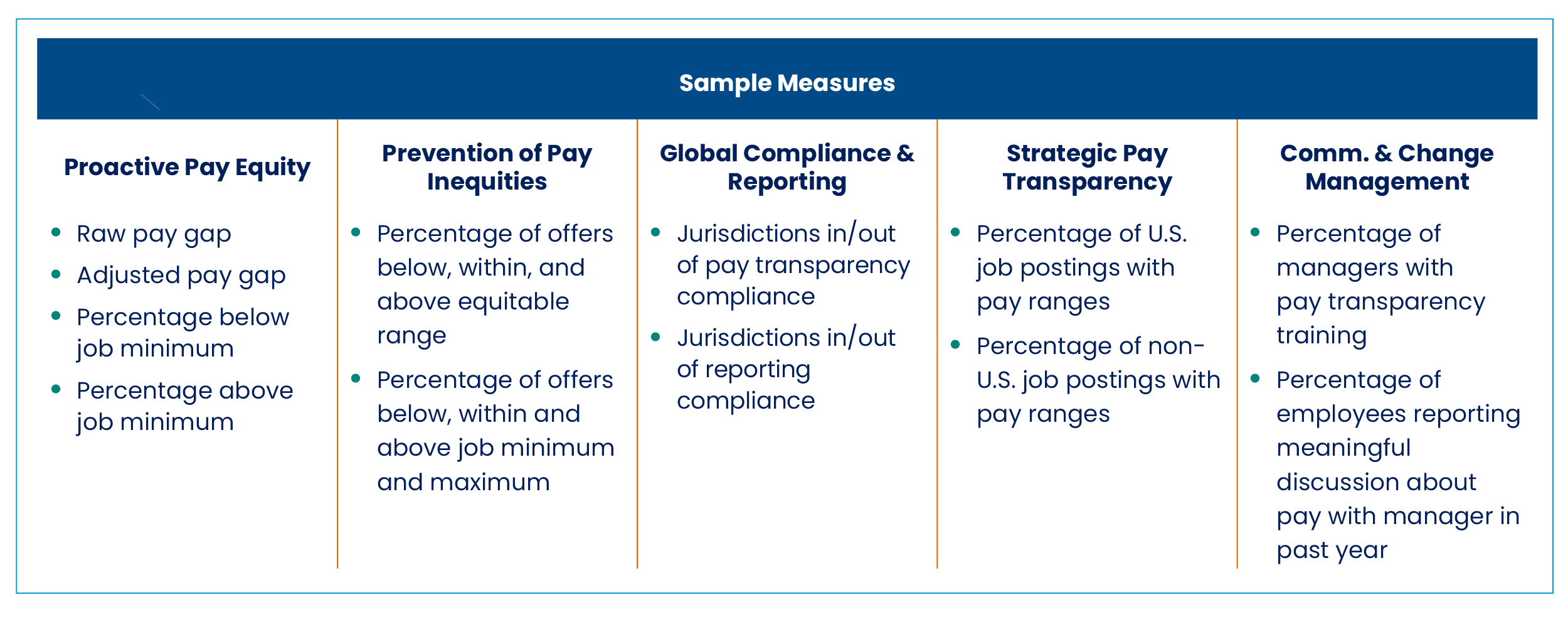For WorldatWork Members
- 5 Things TR Pros Can Do to Mitigate Pay Transparency Risks, Workspan Daily Plus+ article
- Answers to Common Employee Questions on Pay Transparency, Workspan Daily Plus+ article
- Pay Equity Practices, research
- Pay Equity Planning Guide, tool
For Everyone
- Rapinoe: Pay Equity Can Be a Goal for Everyone, Workspan Daily article
- Tips on Taking the Emotion Out of Pay Conversations, Workspan Daily article
- Committing to Pay Equity, course
- Addressing Pay Equity Under Increased Scrutiny, on-demand webinar
Pay transparency legislation aimed in part at helping to improve pay equity continues to expand around the world. But organizations won’t achieve global pay equity through legal compliance alone. Developing a global pay equity strategy is also essential. Employers that create such a strategy are more likely to achieve pay equity and to enjoy resulting benefits such as the ability to attract and retain top talent, increased levels of employee engagement and trust, and more inclusive cultures.
When crafting a global pay equity strategy, employers should pay attention to these six areas:
1. Proactive Pay Equity
Organizations should regularly conduct pay equity analyses and address any unexplained pay inequities that are identified. To do this effectively, it’s important to understand what is meant by pay equity.
Most people are familiar with the raw pay gap, which indicates how average or median pay differs by demographic group. For example, in the EU, women are paid 13% less per hour than men, on average.
Conceptually, we can break the raw pay gap down into two components:
- The “explained” pay gap, which indicates the extent to which pay differs across demographic groups due to relevant differences in compensable factors, such as occupation, role, education and experience.
- The “unexplained” pay gap, which is the remaining gap that we are unable to explain and that may be due to pay inequities based on gender, race/ethnicity or another demographic characteristic.
 2. Prevention of Pay Inequities
2. Prevention of Pay Inequities
Workforces are dynamic. Employees are promoted, change jobs or leave, and new employees are hired. Every pay decision can promote pay equity or contribute to pay disparities. To prevent pay inequities from occurring, create policies and processes that ensure compensation decisions are reviewed for internal equity before they are finalized. Additionally, support these processes with software for decision-makers to ensure data-driven, equitable compensation decisions.
3. Global Compliance and Reporting
The complex landscape of pay transparency legislation presents challenges for all employers. Of the 38 members of the Organization for Economic Cooperation and Development (OECD), just over half require private-sector companies to report on gender pay gaps.
Multi-jurisdictional employers faced with reporting requirements that differ by location operate on a continuum, with local management on one end and centralized management on the other. 
Employers have typically relied on local management. Adopting a centralized approach, however, can drive efficiency, particularly for companies required to comply with the EU Pay Transparency Directive.
4. Strategic Pay Transparency
Strategic pay transparency refers to the information an employer chooses to share about its pay practices and policies that goes beyond what is legally required. While employers must comply with legally mandated pay transparency requirements, how far they go beyond those requirements is a strategic choice. Every organization needs to decide what information it wants to share and who it wants to share it with.
As they do so, they will want to recognize the quickly shifting norm toward greater pay transparency. The discretionary component of your pay transparency strategy sets your organization apart.
 5. Communication and Change Management
5. Communication and Change Management
Every facet of your global pay equity strategy likely will require some degree of communication, education and training. As you roll out your strategy, ask yourself the following questions:
- Who needs to know?
- What information do we want to convey to each audience?
- How is the information best communicated to each audience?
It is a good idea to work with legal counsel when developing your communication plan.
6. Measurement and Accountability
In crafting a global pay equity strategy, it’s important to develop and implement a measurement framework to track progress and drive accountability. While an enterprise-wide view may be suitable for some companies, others may prefer to measure progress by leader or line of business. Examples of appropriate measures are shown below: 
A Three-Year Plan
Developing a global pay equity strategy takes time. Below is an example of a three-year plan that identifies key actions for each of the six areas outlined in this article: 
When employers identify near-term priorities and develop a plan for the future, it puts the goal of global pay equity within reach.
Editor’s Note: Additional Content
For more information and resources related to this article see the pages below, which offer quick access to all WorldatWork content on these topics:







